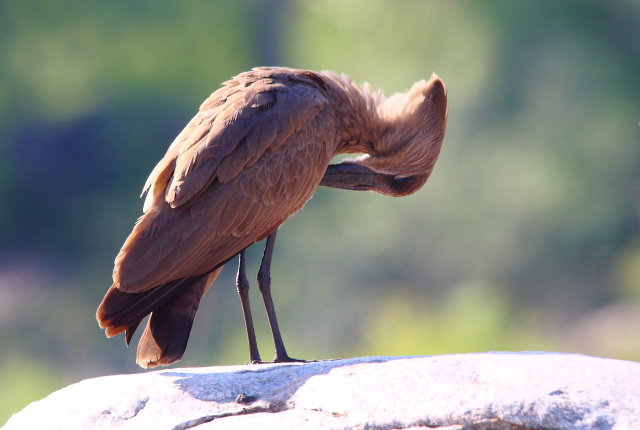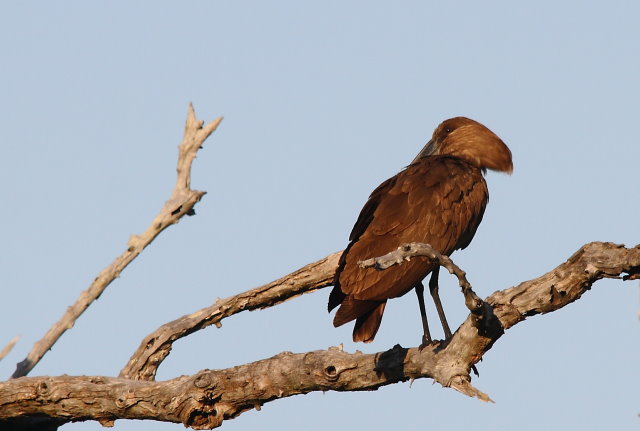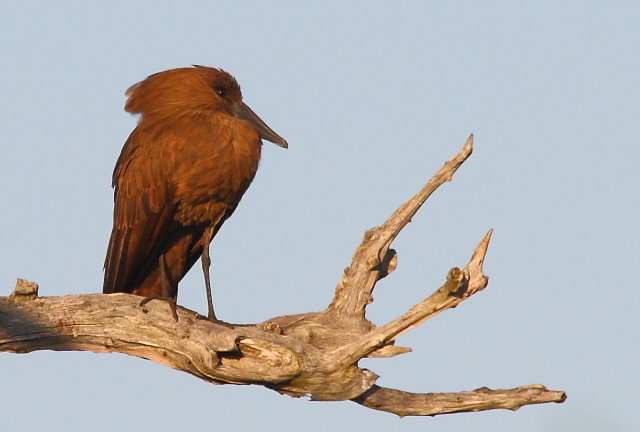(Info from The Handbook of Birds of the World. Vol. 1, Lynx Edicions).
Hamerkop
Hamerkop
It's a bit of an enigma as Hamerkops have bills that resemble the Shoebill or Boat-billed Heron, a pectinated middle toe as in the Herons, a free hind toe as in the Flamingoes, egg-white protein like Storks, ectoparasites that are only found in the Plovers and unique behavioural habits. 

(Info from The Handbook of Birds of the World. Vol. 1, Lynx Edicions).
(Info from The Handbook of Birds of the World. Vol. 1, Lynx Edicions).
Dewi
What is the good of having a nice house without a decent planet to put it on? (H D Thoreau)
What is the good of having a nice house without a decent planet to put it on? (H D Thoreau)
- Penga Ndlovu
- Posts: 2400
- Joined: Thu May 31, 2012 9:38 pm
- Country: Bush area
- Location: Grietjie Nature Reserve, Phalaborwa
- Contact:
Re: Bird Photos - Not Park Specific
Hamerkop
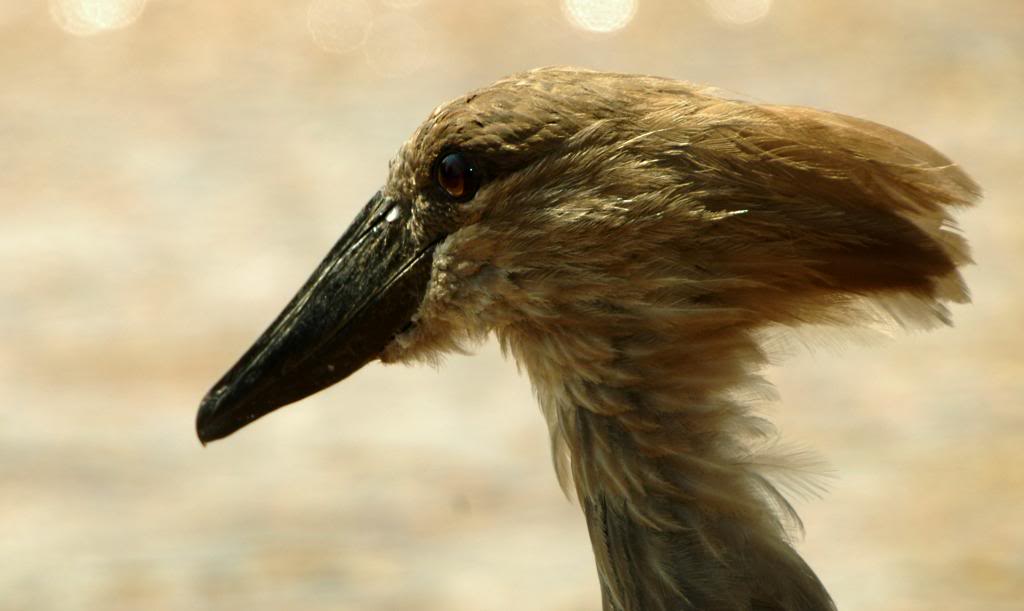

"Longing for the bush is a luxury many have.
Living in the bush is a luxury that only a few have"
Living in the bush is a luxury that only a few have"
Re: Stork - Bird of the Month: March 2013
081. Hamerkop Scopus umbretta (Hamerkop)
Order: Pelecaniformes. Family: Scopidae
Description: Length 48-56 cm. Weight up to 535 g. Its plumage is a dull brown. Heavy backward pojecting crest. Brown eye. The black bill is long, flat, and slightly hooked. The neck and legs are short. Black legs and feet. The Hamerkop has partially webbed feet, for unknown reasons. It middle toe is comb-like (pectinated) like a heron's. Its tail is short and its wings are big, wide, and round-tipped; it soars well. When it does so, it stretches its neck forward like a stork or ibis, but when it flaps, it coils its neck back something like a heron. Sexes are alike.
Habitat: It generally favours the shallow margins of lakes, pans, swamps, rivers, marshes, streams, seasonally flooded ponds and even small puddles in gravel roads.
Diet: It eats mainly the adults and tadpoles of platanna frogs (Xenopus), which have a very similar distribution to the Hamerkop, suggesting that it is dependent on them for food. It also eats other frogs, small fish and insects, using a variety of foraging techniques, such as wading through the water and stabbing prey, still-hunting at the water's edge or pouncing on prey from the air. It has also been observed robbing Hadedas of earthworms that they pulled up from a sports field.
Breeding: Monogamous solitary nester. The nest is usually built by both sexes, or rarely a group of up to seven birds, with construction taking anything from 40-43 days to several months. It consists of a uniquely-shaped, large pile of material with an interior chamber and entrance low down on the side. At first, a supporting structure of sticks similar to an inverted pyramid is laid down. The walls are then built by interlocking twigs and finally the whole structure is covered with stalks, sticks, reeds, grass and twigs, while it often decorates it with a variety of both natural and man-made materials, including cardboard, plastic, leaves, bark, aloe stems and stones and wool. It is typically placed in a tree over or next to water, occasionally on a bridge, dam, wall, house or even on the ground. Other animals often usurp the nest of the Hamerkop, such as bees, reptiles and other birds, including Barn owls and Black sparrowhawks. Egg-laying season is almost year-round, peaking from August-September in Zimbabwe and from July-January in South Africa. It lays 3-9 eggs, which are incubated by both adults for about 26-30 days. The chicks leave the nest after 45-50 days and can fly strongly a few days later.
Order: Pelecaniformes. Family: Scopidae
Description: Length 48-56 cm. Weight up to 535 g. Its plumage is a dull brown. Heavy backward pojecting crest. Brown eye. The black bill is long, flat, and slightly hooked. The neck and legs are short. Black legs and feet. The Hamerkop has partially webbed feet, for unknown reasons. It middle toe is comb-like (pectinated) like a heron's. Its tail is short and its wings are big, wide, and round-tipped; it soars well. When it does so, it stretches its neck forward like a stork or ibis, but when it flaps, it coils its neck back something like a heron. Sexes are alike.
Habitat: It generally favours the shallow margins of lakes, pans, swamps, rivers, marshes, streams, seasonally flooded ponds and even small puddles in gravel roads.
Diet: It eats mainly the adults and tadpoles of platanna frogs (Xenopus), which have a very similar distribution to the Hamerkop, suggesting that it is dependent on them for food. It also eats other frogs, small fish and insects, using a variety of foraging techniques, such as wading through the water and stabbing prey, still-hunting at the water's edge or pouncing on prey from the air. It has also been observed robbing Hadedas of earthworms that they pulled up from a sports field.
Breeding: Monogamous solitary nester. The nest is usually built by both sexes, or rarely a group of up to seven birds, with construction taking anything from 40-43 days to several months. It consists of a uniquely-shaped, large pile of material with an interior chamber and entrance low down on the side. At first, a supporting structure of sticks similar to an inverted pyramid is laid down. The walls are then built by interlocking twigs and finally the whole structure is covered with stalks, sticks, reeds, grass and twigs, while it often decorates it with a variety of both natural and man-made materials, including cardboard, plastic, leaves, bark, aloe stems and stones and wool. It is typically placed in a tree over or next to water, occasionally on a bridge, dam, wall, house or even on the ground. Other animals often usurp the nest of the Hamerkop, such as bees, reptiles and other birds, including Barn owls and Black sparrowhawks. Egg-laying season is almost year-round, peaking from August-September in Zimbabwe and from July-January in South Africa. It lays 3-9 eggs, which are incubated by both adults for about 26-30 days. The chicks leave the nest after 45-50 days and can fly strongly a few days later.
Re: Stork - Bird of the Month: March 2013
Excellent photos & info all. 
Hammerkop fishing.
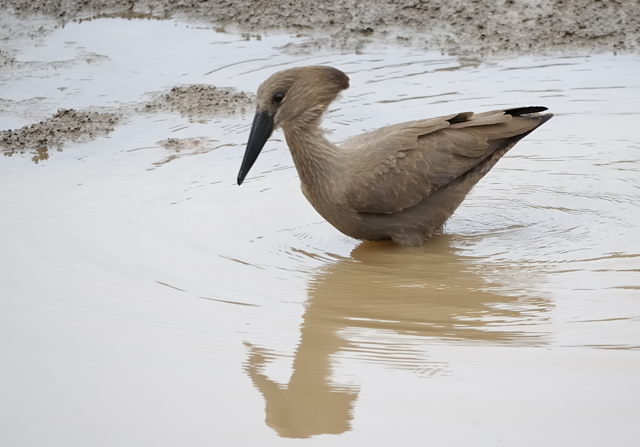

Collecting nesting material.
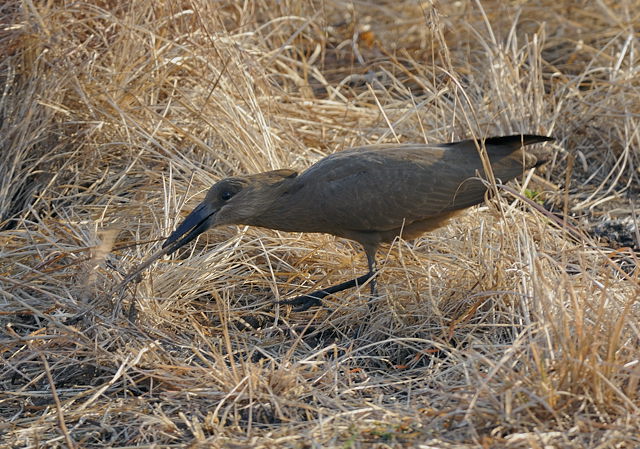

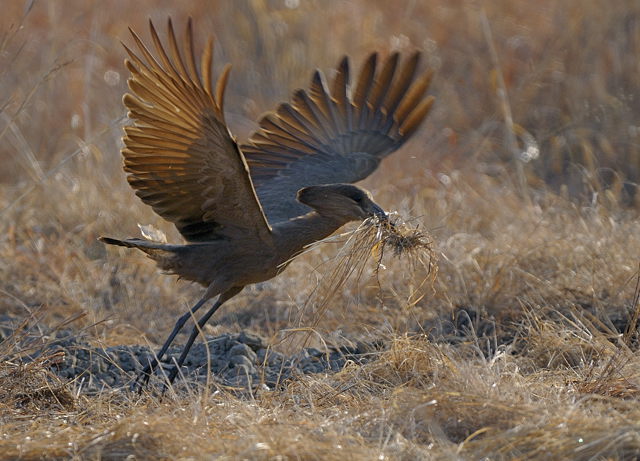
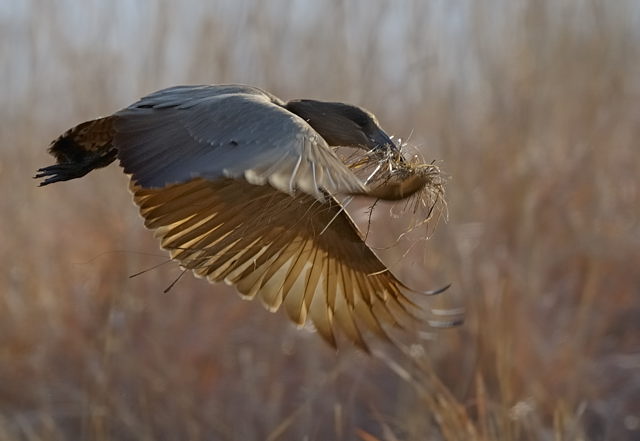



Hammerkop fishing.


Collecting nesting material.







Dewi
What is the good of having a nice house without a decent planet to put it on? (H D Thoreau)
What is the good of having a nice house without a decent planet to put it on? (H D Thoreau)
- Amoli
- Posts: 6032
- Joined: Fri Jun 01, 2012 4:30 am
- Country: South Africa
- Location: Kempton Park
- Contact:
Re: Stork - Bird of the Month: March 2013
Hammerkop..........stork -O -O
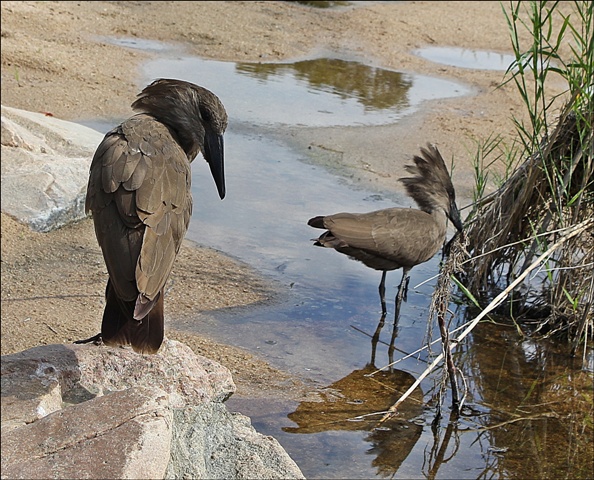
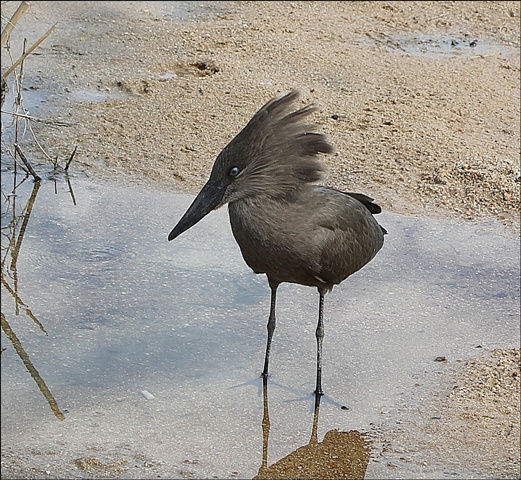
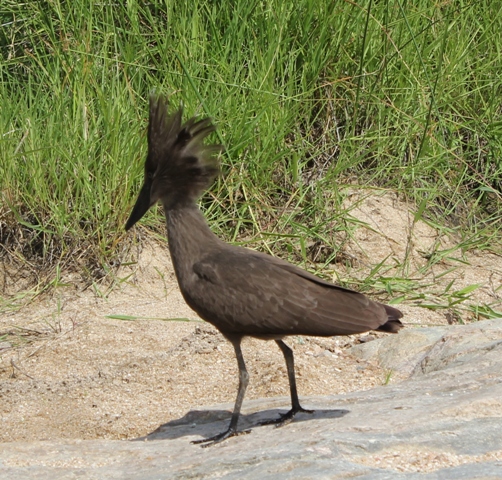



Pretoriuskop
Satara
Shingwedzi
20-30 Dec 2014
Satara
Shingwedzi
20-30 Dec 2014
- Lisbeth
- Site Admin
- Posts: 65869
- Joined: Sat May 19, 2012 12:31 pm
- Country: Switzerland
- Location: Lugano
- Contact:
Re: Hamerkop
Sure that it is not a fish?
"Education is the most powerful weapon which you can use to change the world." Nelson Mandela
The desire for equality must never exceed the demands of knowledge
The desire for equality must never exceed the demands of knowledge
- Richprins
- Committee Member
- Posts: 75347
- Joined: Sat May 19, 2012 3:52 pm
- Location: NELSPRUIT
- Contact:
Re: Hamerkop
Sure! We watched carefully, and it tried to get onto the carcass too! 
Please check Needs Attention pre-booking: https://africawild-forum.com/viewtopic.php?f=322&t=596



